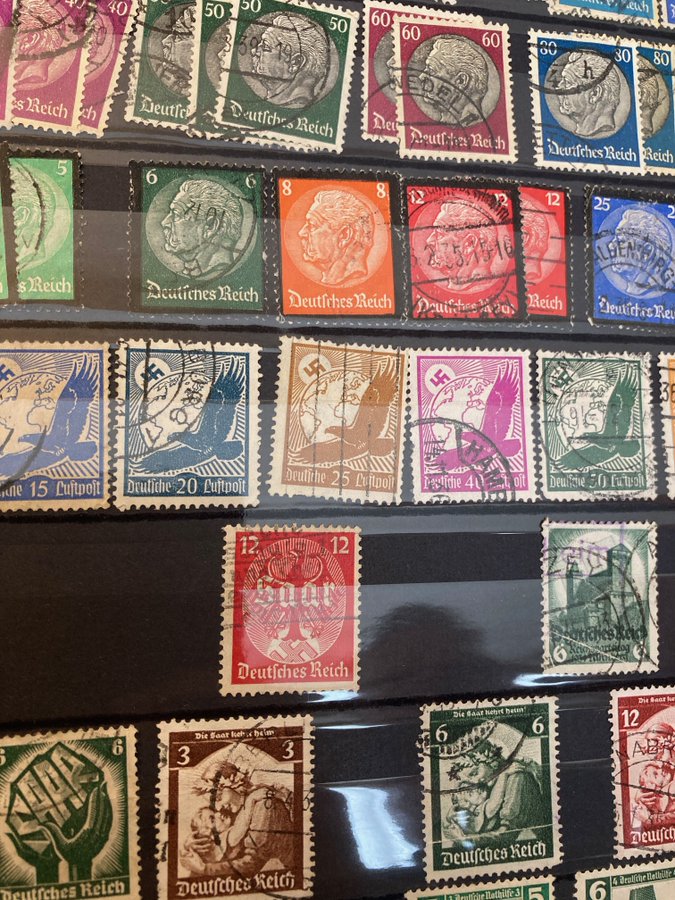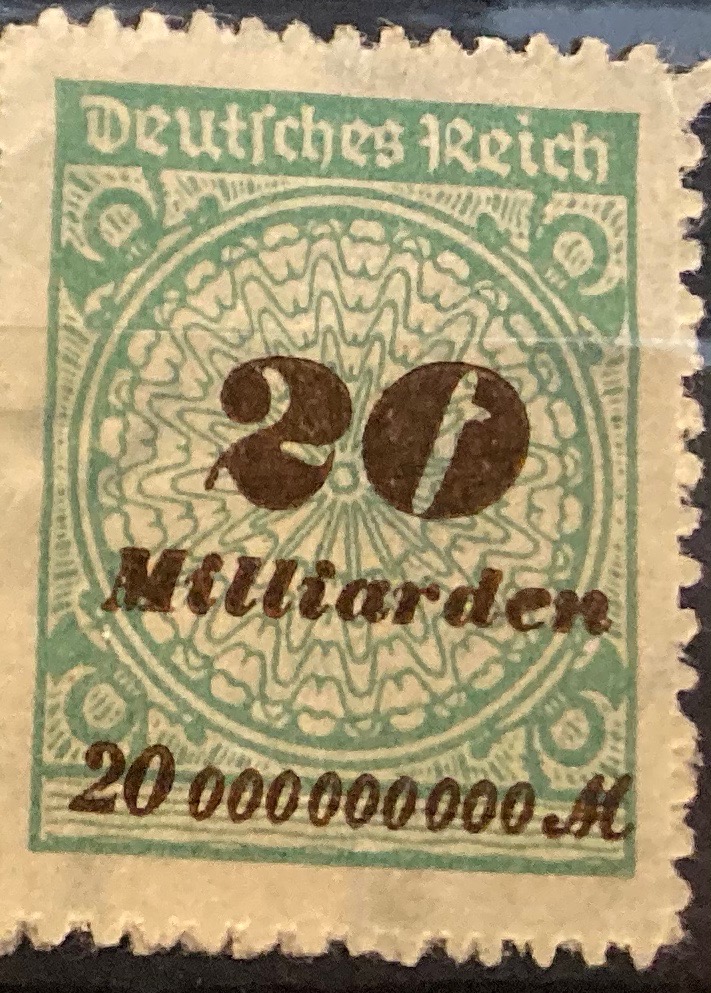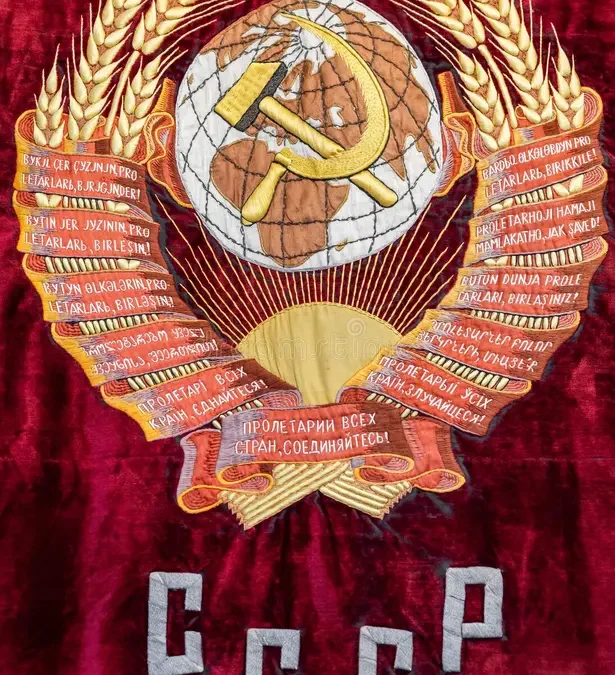Looking through my father’s stamp collection, I found history’s warning against money printing – a phenomenon currently taking place in the US and elsewhere under the euphemism ‘quantitative easing’. This photo essay takes us through just a few months in Germany in 1923. We start with a stamp worth a third of a Groschen…
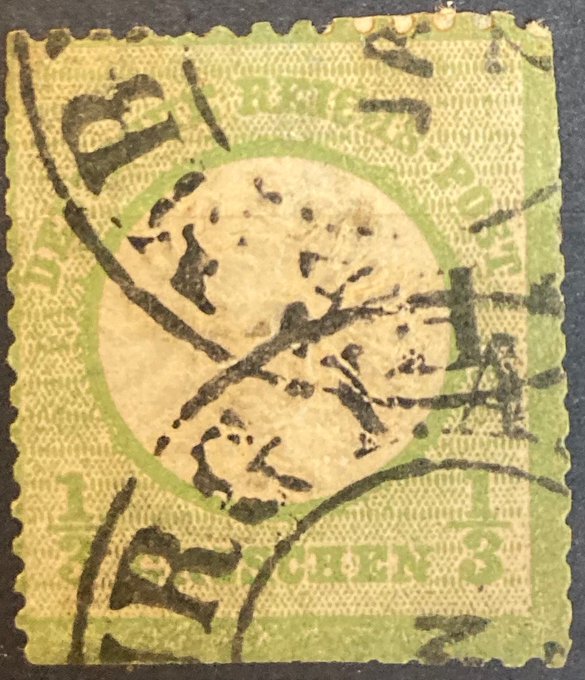
Now 1, and 2.5 Groschen…
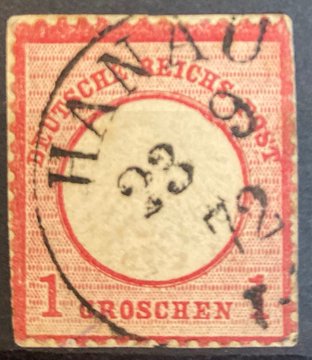
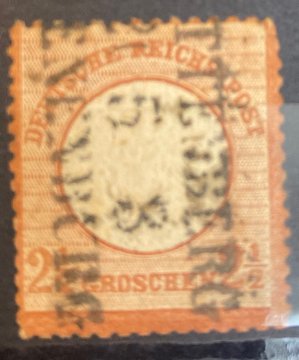
2 Marks – 40 Marks…
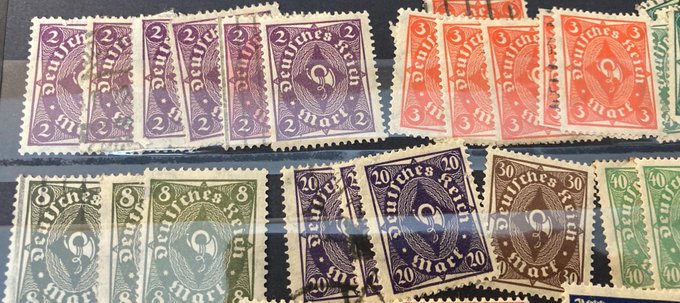
50 Marks – 100 Marks…
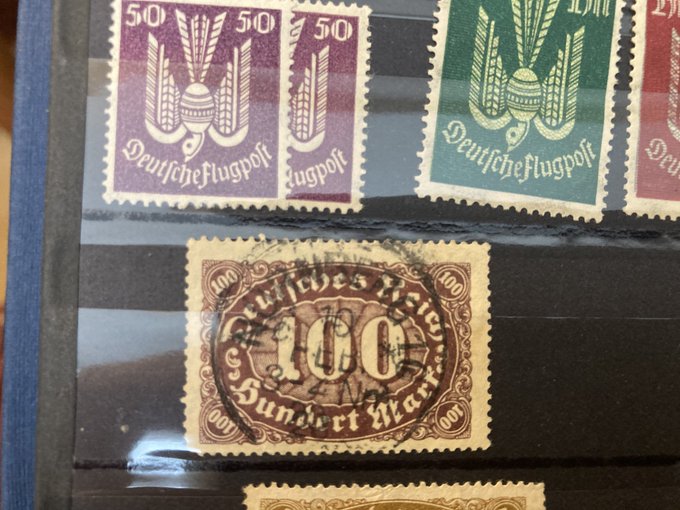
100 Marks – 1000 Marks…
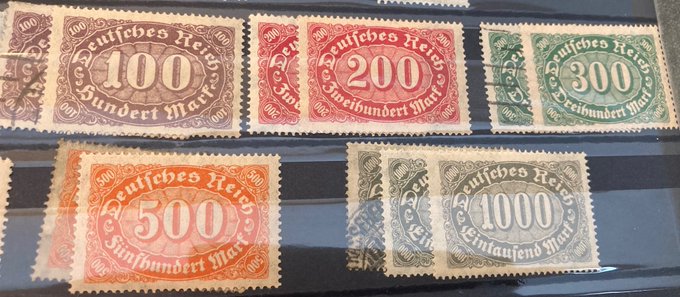
2,000 Marks – 100,000 Marks…
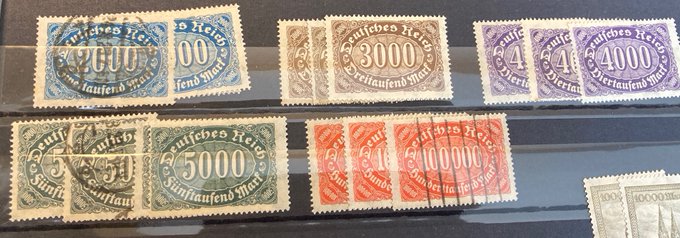
20,000 Marks – 2 million Marks…
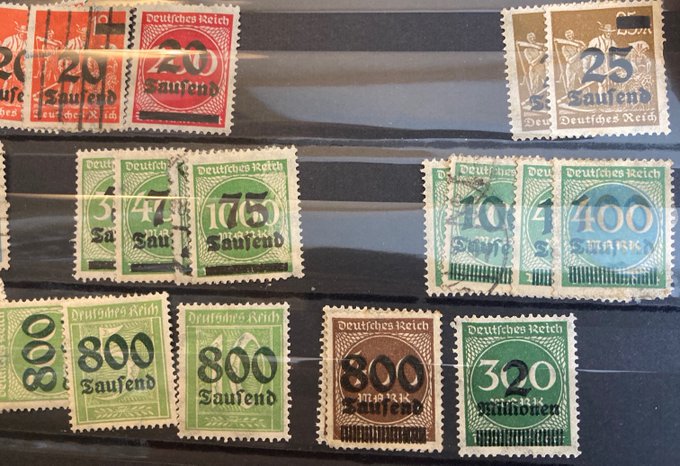
2 million Marks – 5 million Marks…

to 10 million Marks…
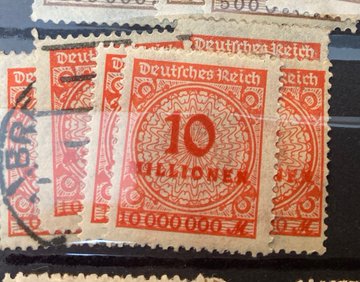
to 20 million Marks…
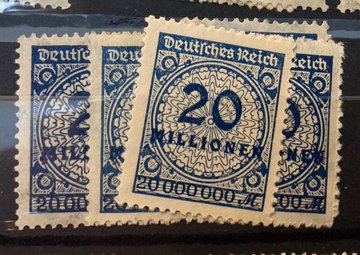
to 50 million Marks…
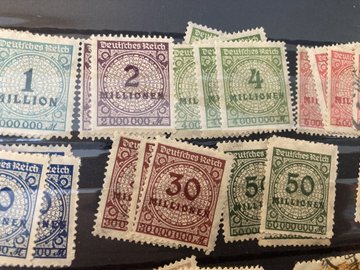
to 100 million Marks…
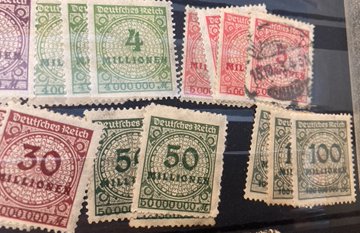
1 billion Marks to 2 billion Marks…
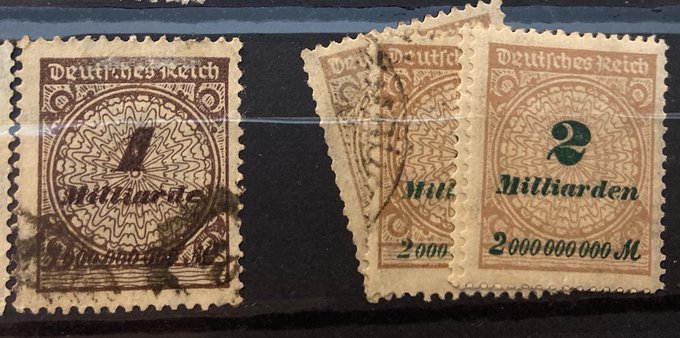
2 billion Marks to 5 billion Marks…
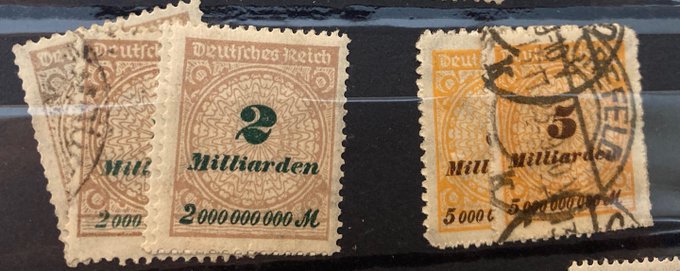
10 billion Marks to 20 billion Marks…
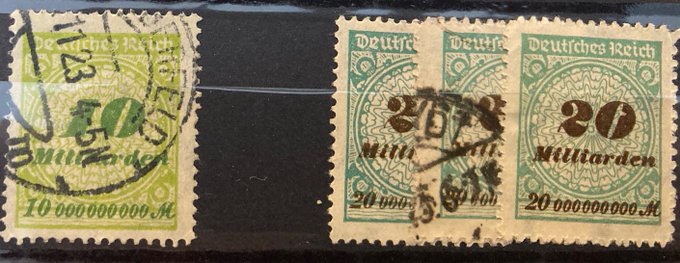
And then the head of the central bank, Hjalmar Schacht, reset the currency on the Rentenmark, and brought the value of stamps back to single and double digits…
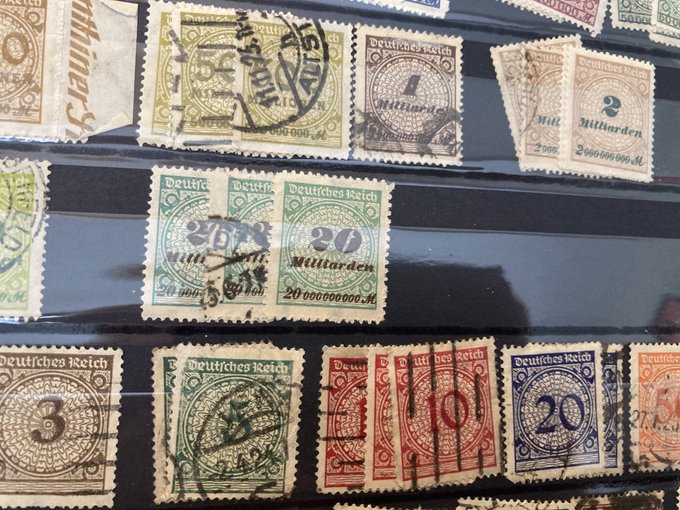
…and even brought them back to Pfennigs – hundredths of Marks…
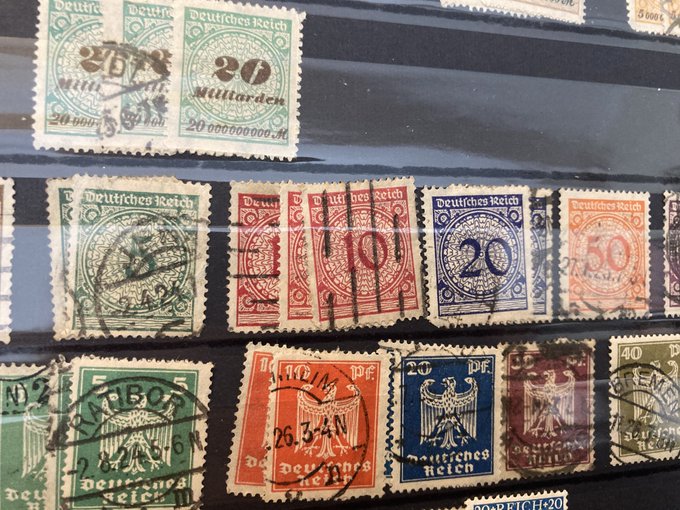
The money-printing had started to fund war reparations, and was accelerated to support workers through a general strike that was called in protest at the French occupation of the Ruhr. A decade later, here is the last of Hindenburg and of the Weimar Republic. Over & out.
